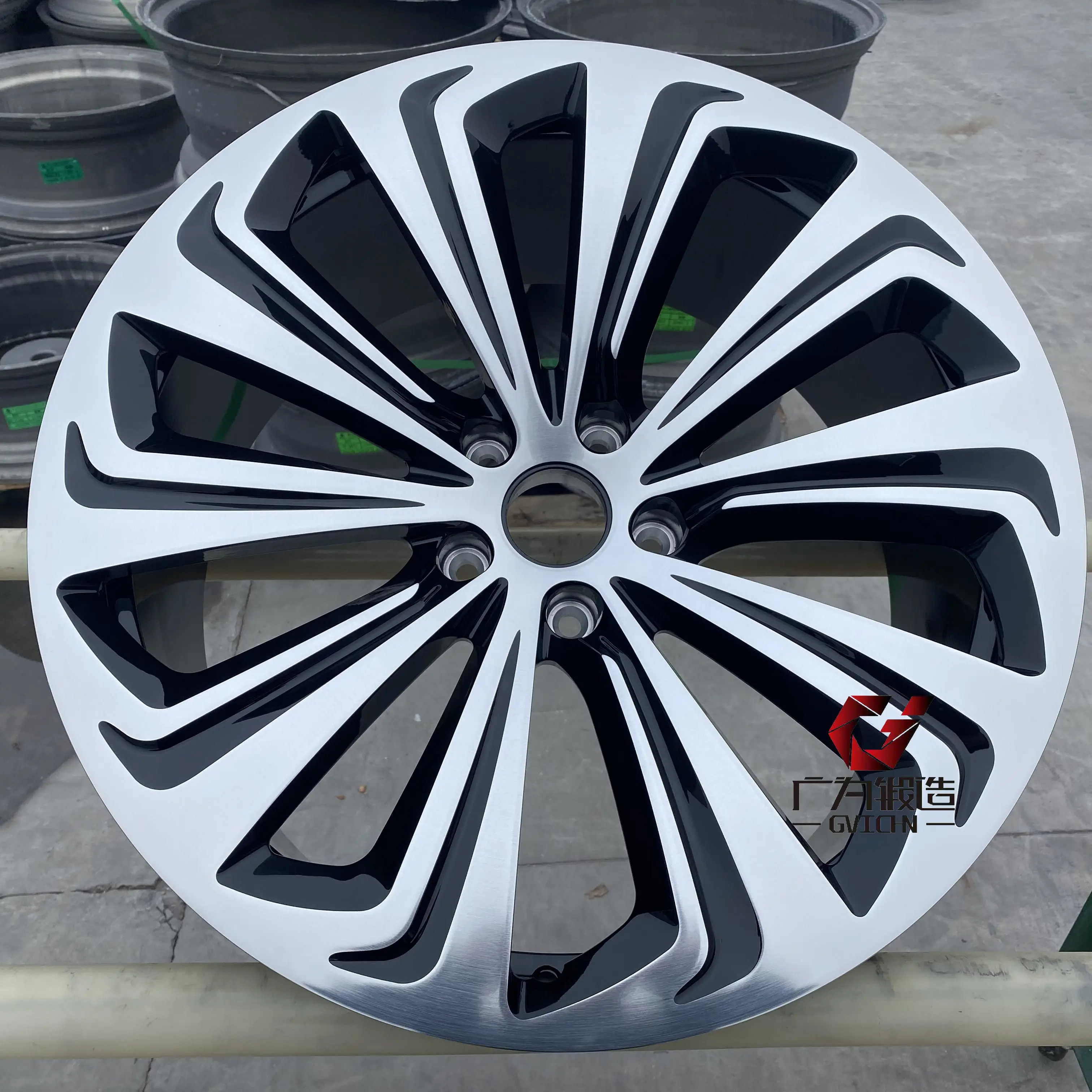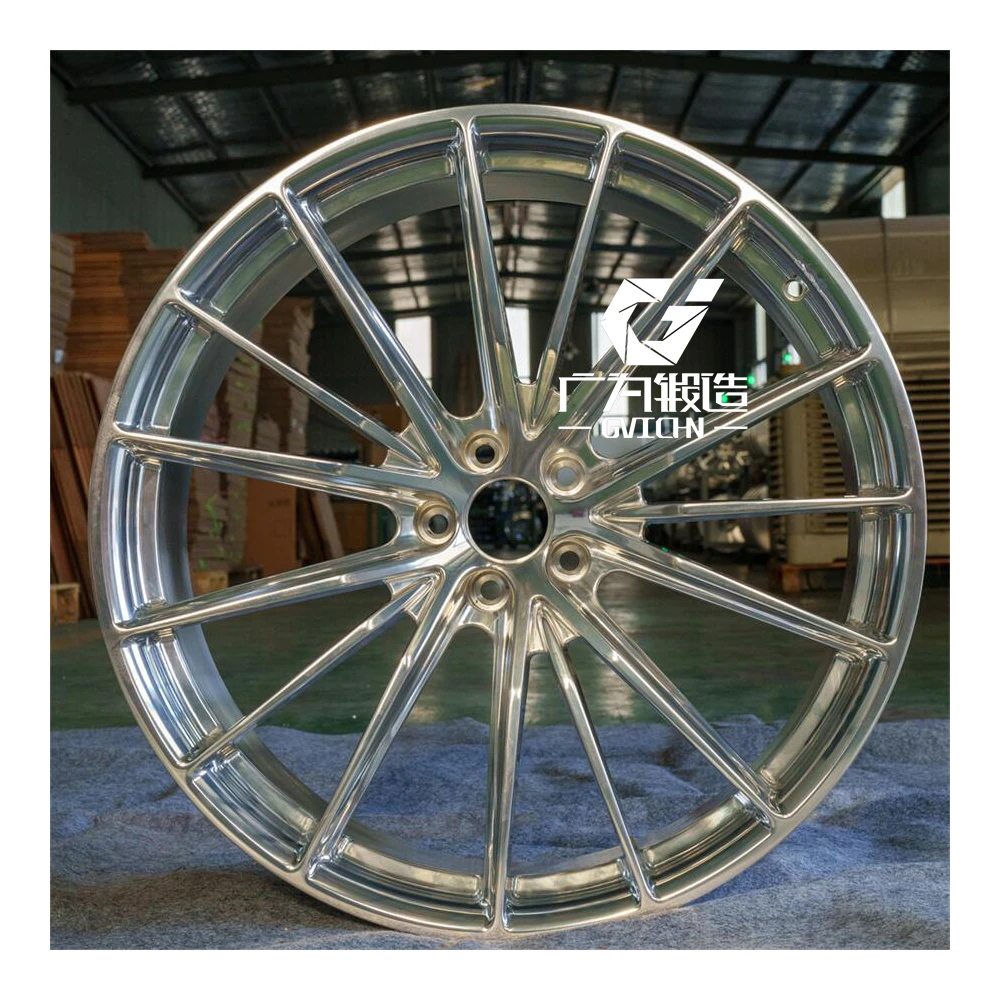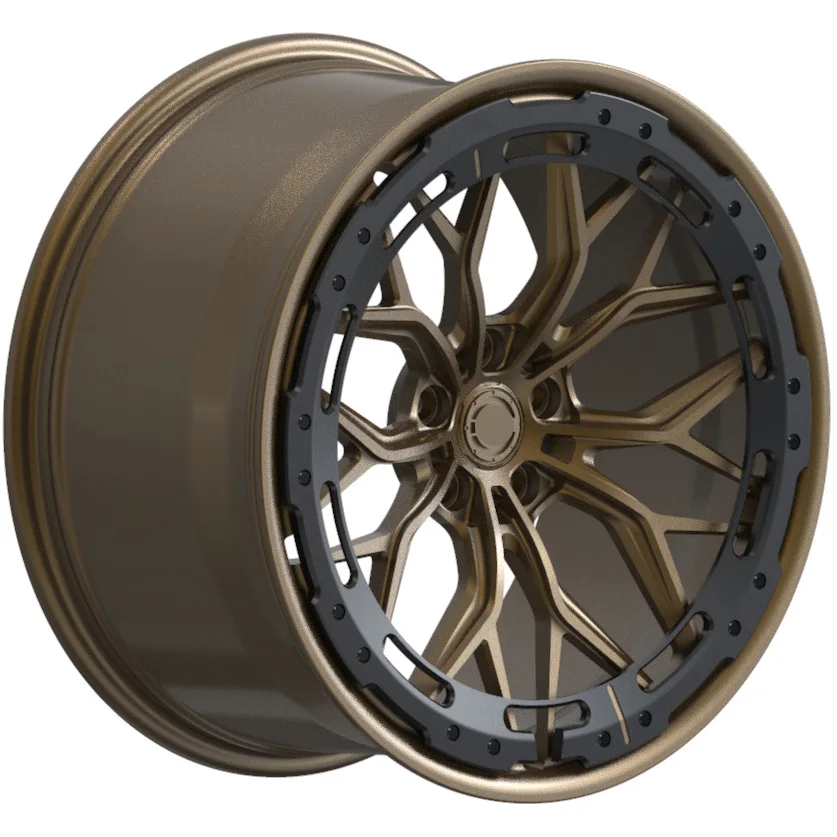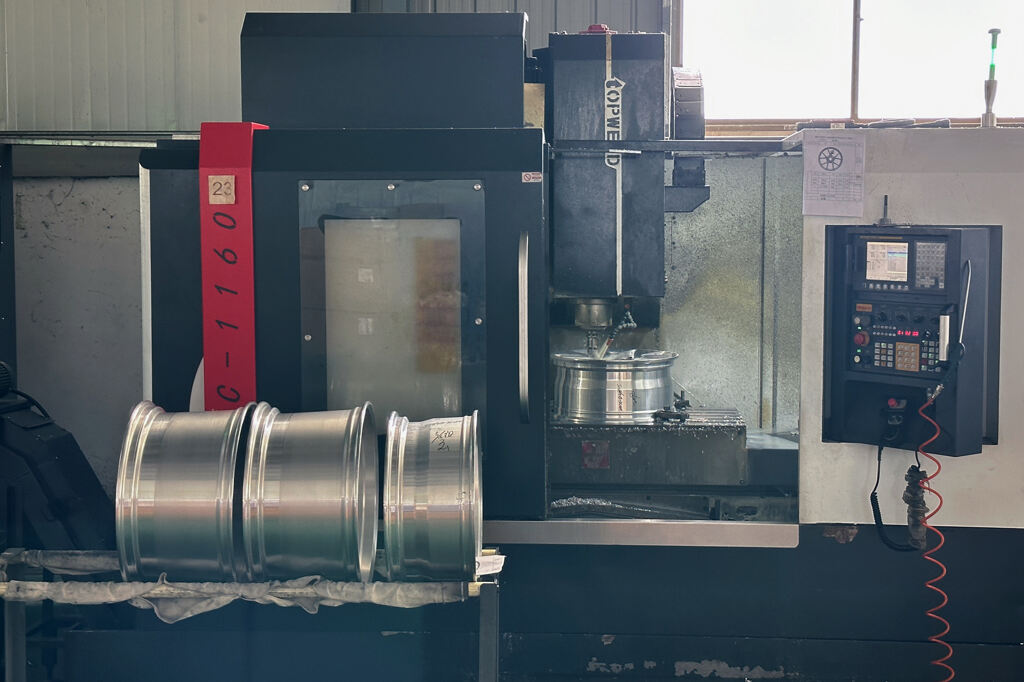The Engineering Behind Three-Piece Wheel Design
Modular Construction Explained
The three-piece wheel design is renowned for its modular construction approach, where the rim, barrel, and face are separately manufactured, enhancing customization options. This configuration allows enthusiasts to tailor their wheels according to specific vehicle requirements, especially for those seeking unique looks or performance characteristics. The design also supports easier shipping and repairs, a considerable advantage as damaged components can be replaced individually without discarding the entire wheel. This modularity is especially appreciated in motorsports, where quick fixes are often necessary, allowing for flexible adjustments on-the-spot. Ensuring precise fit and alignment involves complex engineering processes, including advanced CAD modeling and CNC machining, which guarantee that each part fits perfectly with the others, maintaining the wheel's structural integrity and overall performance.
Material Selection for Strength & Weight
Material selection is critical in the strength and performance of three-piece wheels. These wheels typically utilize aluminum alloys due to their excellent balance between weight and strength, making them a popular choice among enthusiasts and manufacturers alike. Studies have highlighted that high-grade materials not only enhance performance but also contribute to improved fuel efficiency due to their lightweight nature. For instance, many three-piece wheels incorporate specific aluminum alloys, each offering distinct tensile strengths that substantiate their role in enhancing wheel performance. This focus on material quality ensures durability and reliability, enabling the wheels to withstand various driving conditions, from everyday use to high-stress environments like racing tracks, without compromising on performance.
Interchangeable Components for Custom Offsets
One of the standout features of three-piece wheels is the ability to customize offsets through interchangeable components, catering to a wide range of vehicle types. This adaptability allows drivers to finetune their wheel settings, aligning them with specific driving styles or preferences, which can significantly enhance drivability and handling. Customer preferences often dictate these adjustments, allowing for tailored performance outputs, particularly beneficial for off-road vehicles where handling and ground clearance are crucial. Case studies have demonstrated how specific custom offsets have improved performance metrics, such as stability and traction, especially for vehicles equipped for rugged terrains. This interchangeability not only showcases the flexibility of three-piece designs but also underscores their value in enhancing both safety and driving experience across various automotive applications.
Performance Advantages of 3-Piece Wheels
Weight Savings vs. One-Piece Wheels
Three-piece wheels offer notable weight savings compared to traditional one-piece wheels. Research indicates that the reduced weight of three-piece designs aids in enhancing vehicle performance, facilitating better acceleration, braking distance, and overall fuel efficiency. Performance metrics from automotive experts affirm these benefits, showing that lighter wheels contribute to agile handling and improved fuel economy. Furthermore, anecdotal evidence from racing teams, which often opt for three-piece wheels, supports their efficacy in high-performance settings. This weight advantage underscores the three-piece wheels' position as a preferred choice for optimizing vehicle dynamics.
Customization for Jeep & Truck Applications
The customization capabilities of three-piece wheels serve as a significant advantage for Jeep and truck applications. These wheels can be tailored to meet the distinct needs of off-road vehicles, offering various styles and finishes that enhance aesthetic appeal and functionality. Customer feedback emphasizes the high demand for personalization in this sector, highlighting the increasing popularity of three-piece wheels among off-road enthusiasts. Statistics on market trends reveal the growing preference for customizable options within the off-road community, marking these wheels as a favored choice for those seeking to elevate the performance and appearance of their Jeeps and trucks.
Durability in Off-Road Environments
In the demanding environment of off-road driving, three-piece wheels are engineered to offer enhanced durability without sacrificing structural integrity. Tests on materials and field studies show that these designs outperform standard wheels in rugged terrains, providing superior resilience against harsh conditions. This durability is supported by testimonials from off-road enthusiasts who have experienced the long-lasting nature of three-piece wheels. Their ability to withstand the rigors of off-road environments makes them a reliable choice for drivers requiring sturdy, dependable wheels capable of enduring the challenges of adventurous terrains. Real-world data substantiate the claim that these wheels remain intact under extreme, challenging conditions.
Three-Piece Wheels in Off-Road & Truck Culture
Compatibility with Oversized Off-Road Tires
Three-piece wheels are uniquely designed to accommodate oversized off-road tires, addressing a vital need in modern off-road applications. This compatibility significantly enhances traction and control, vital attributes for navigating challenging terrains. For instance, studies in off-road vehicle dynamics have shown a direct correlation between wheel-tire compatibility and improved performance metrics such as grip and steering response. Further insights from wheel manufacturers highlight the precise specifications and recommendations necessary to maximize these benefits, offering insights into optimizing tire size choices for off-road activities.
Black Rims Aesthetic for Modern Trucks
The aesthetic appeal of black rims has captivated truck enthusiasts, offering a sleek, aggressive look that has become increasingly popular. Market analysis reveals a noticeable trend shift towards darker finishes in wheel design, particularly among younger consumers. This trend is supported by visual evidence from truck shows and automotive exhibitions, showcasing a variety of modern trucks adorned with black rims that enhance their overall visual impact. The shift not only reflects personal taste but also indicates a broader cultural embrace of contemporary, bolder aesthetics in truck customization.
Load Capacity for Heavy-Duty Use
For trucks involved in heavy-duty applications, three-piece wheels prove ideal due to their engineered ability to handle heavier loads. Industry standards and rigorous load testing substantiate that these wheels surpass one-piece wheels in terms of load capacity and reliability. Professional testimonies from experts in hauling and towing highlight the practical applications and dependability of three-piece wheels. These wheels not only withstand the demands of heavy-duty use but also contribute to the longevity and safety of vehicles operating in challenging environments, underscoring their value in the truck and off-road culture.
Comparing Wheel Types: 1-Piece vs. 3-Piece
Cost-Benefit Analysis
Conducting a cost-benefit analysis between 1-piece and 3-piece wheels reveals stark contrasts. While 3-piece wheels come with a higher upfront cost due to their complex construction, the potential for long-term savings in repairs and durability can justify this investment. Statistics indicate that over a five-year period, owners of 3-piece wheels might save significantly on repair costs compared to those using 1-piece wheels. Expert opinions, such as those from automotive financial analysts, suggest that despite the initial expense, the investment value in 3-piece wheels pays off through lower maintenance costs and increased customization options that enhance vehicle performance and aesthetics.
Repairability After Impact Damage
Three-piece wheels offer remarkable repairability benefits that outshine one-piece designs. When an impact occurs, only the damaged component of a three-piece wheel needs replacement, dramatically reducing repair costs and downtime. In contrast, one-piece wheels often necessitate complete replacements when damaged. Automotive service centers commonly report lower repair rates and faster turnaround times with three-piece wheels, underscoring their practicality and cost-effectiveness for enthusiasts and professionals alike who value efficiency in handling impact damage.
Aerospace Manufacturing Techniques
Three-piece wheels leverage advanced aerospace manufacturing techniques, such as precision machining and the use of robust materials, to deliver unmatched durability and strength. The application of these technologies results in wheels that can withstand the rigors of automotive use while providing superior performance. Aerospace quality assurance processes serve as a testament to the reliability and resilience of three-piece wheel designs. Insights into how these techniques are adapted for automotive use offer an innovative perspective on wheel engineering, showcasing the benefits leading manufacturers incorporate to deliver high-quality products suitable for various terrains and conditions.
Maintenance & Longevity Considerations
Seal Integrity for All-Terrain Use
Maintaining seal integrity is crucial for preventing air leaks, especially in all-terrain conditions where varying pressures are commonplace. For instance, off-road tires are often exposed to harsh environments that can jeopardize their performance if the seal fails. Studies indicate that 3-piece wheels designed with advanced sealing technology have lower failure rates in rugged conditions. Real-life examples of wheel seal failures during off-road events highlight the importance of ensuring robust seal integrity, particularly in challenging terrains where reliability is paramount.
Refinishing Options for Black Rims
Three-piece wheels provide multiple refinishing options for black rims, allowing owners to preserve their aesthetic appeal while extending wheel longevity. Industry experts recommend using specific refinishing methods and products, such as powder coating or ceramic finishes, to enhance both the appearance and the durability of jeep rims. By comparing the lifetime value of refinishing versus replacing wheels, consumers can gain valuable financial insights into maintaining their wheels' aesthetic integrity.
Barrel Replacement vs. Full Wheel Cost
Opting for barrel replacement rather than full wheel replacement can yield significant cost savings, while maintaining wheel functionality. A detailed financial analysis of typical wheel repair scenarios reveals that replacing only the damaged barrel is more economical than buying new truck rims. Furthermore, consumer surveys reflect preferences for barrel replacement, citing significant advantages in terms of cost savings and continued functionality. This approach not only reduces expenditure but also minimizes environmental impact through reduced waste.







 Hot News
Hot News
 ONLINE
ONLINE